
Mercedes-Benz S-Class Cabriolet (2016-2021) engines, drive and performance
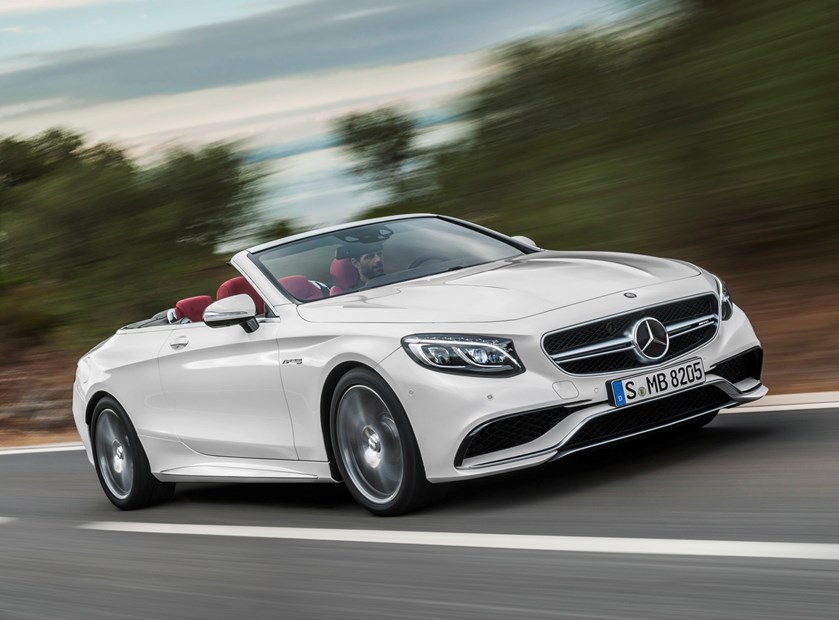
- Three engines to pick from – two V8s and a V12
- Substantial performance regardless of choice
- All record well under five-second 0-62mph sprints
The Mercedes-Benz S-Class Cabriolet has a restricted engine choice, much like the coupe. Both eschew the saloon’s socially conscious diesel and hybrid models for the Old Testament fire and thunder of V8 and V12 petrol powertrains.
Petrol engines
Kicking things off is perhaps the best all-rounder of the bunch, the S500. This uses a mighty 4.7-litre V8 with 455hp and 700Nm of torque available from a lowly 1,800rpm.
This power is channelled through a 9-speed automatic gearbox to the rear wheels (all S-Class Cabriolet models are rear driven) and can dispatch the 0-62mph sprint in just 4.6 seconds, on to an electronically limited 155mph – the same top-rate as the S63 and S65.
Make no mistake, this is a fast car, with bags of low-down torque and enough midrange punch to make the 70mph speed limit feel like the start of its stride. Best of all it’s the only one of the bunch to promise a fuel economy in the 30mpgs and low enough CO2 to qualify for £295 annual VED tax – a saving of more than £200 compared with the AMG models.
Mercedes-AMG S-Class
If neither of those costs are a concern then upgrading to the S63 and its wholly inebriating 5.5-litre V8 is a no-brainer. Power jumps to 585hp and torque swells to 900Nm – ample, but you’ll need 2,250rpm to see the latter, which results in a momentary hesitation at low revs before the S63 really gets going.
The 0-62mph drops dramatically to 4.2 seconds and the fuel economy takes a bit of a hit too. This car uses a 7-speed automatic transmission which feels a little less whip-crack fast as the S500’s but still does a good job of serving up the right gear when you want it.
Most impressive is this car’s duplicity – it’ll hum along contently on the motorway but punctuate more binary throttle inputs with a feral bark from up front and crack-n-rattle from the exhaust behind. At its heart this is a very modern engine, but it sounds like an old war plane.
Full throttle starts bring about serious writhing from the rear wheels while the traction control light blinks madly. Better to wait until you’re rolling before pressing your foot to the firewall – but make sure you’ve got a clear run to the horizon because it will approach with alarming speed. This sort of driving is best deployed on a wide country road with plenty of sweeping bends where the S-Class will waft along at a satisfying pace.
Top of the tree is the S65 – a 6.0-litre V12 with 630hp and a frankly bonkers 1,000Nm of torque from 2,300rpm. This goes through a different 7-speed automatic transmission than the S63 and despite being 50% more expensive, it’s only one a tenth quicker from 0-62mph.
From a pragmatic point of view it’s quite a bit thirstier and more expensive to tax but to be honest, if you’re thinking about buying a near £200,000 V12 convertible it’s unlikely that those things are going to be much of a concern.
- Huge bulk is well contained by trick suspension
- Manages to be both comfortable and responsive
- Mercedes-AMG cars feature sportier set up
It’s worth pointing out this Mercedes-Benz S-Class Cabriolet weighs in at well over two tonnes regardless of which version you pick. It’s also five metres long and more than two metres wide. Long story short – there’s a lot of metal to move about every time you change direction.
Air suspension is standard but the coupe’s clever Magic Body Control system that resists bodyroll in bends is not available. This car has a more relaxed nature though – it’s more at home blasting down straight boulevards than B roads.
Still, even in the softest S500, the battleship S-Class does an admirable job of shrugging off its bulk when things get twisty and can clip along at a frankly startling pace while maintaining remarkable ride comfort.
The suspension offers Comfort and Sport settings and latter lends a more tied down feel. AMG cars are less comfortable overall but feel more agile in the sportier setting.
In reality though you’re better off dialling it back a bit in the corners and making the time up again on the straights – there’s a lot of clever tech at work here but sooner or later physics always wins. Besides, that means more opportunities to give the accelerator pedal a big boot so you can revel in the thunderous soundtrack.


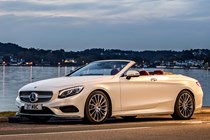
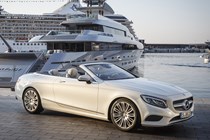
.jpg)
.jpg)
.jpg)
.jpg)
.jpg)
.jpg)
.jpg)
.jpg)
.jpg)
.jpg)
.jpg)
.jpg)
.jpg)
.jpg)
.jpg)
.jpg)
.jpg)
.jpg)
.jpg)
.jpg)
.jpg)

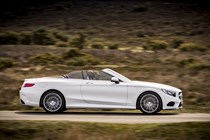
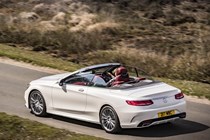
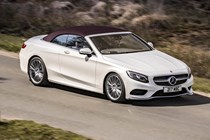
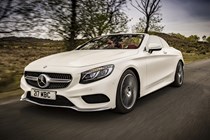
.jpg)
.jpg)
.jpg)
.jpg)
.jpg)
.jpg)
.jpg)
.jpg)
.jpg)
.jpg)
.jpg)
.jpg)
.jpg)
.jpg)
.jpg)
.jpg)
.jpg)
.jpg)
.jpg)
.jpg)
.jpg)
.jpg)
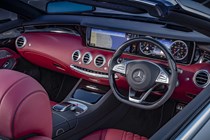
.jpg)
.jpg)
.jpg)
.jpg)
.jpg)
.jpg)
.jpg)
.jpg)
.jpg)
.jpg)
.jpg)
.jpg)
.jpg)
.jpg)
.jpg)
.jpg)
.jpg)
.jpg)
.jpg)
.jpg)
.jpg)
.jpg)
.jpg)
.jpg)
.jpg)
.jpg)
.jpg)
.jpg)
.jpg)
.jpg)
.jpg)
.jpg)
.jpg)
.jpg)
.jpg)
.jpg)
.jpg)
.jpg)
.jpg)
.jpg)
.jpg)
.jpg)
.jpg)
.jpg)
.jpg)
.jpg)
.jpg)
.jpg)
.jpg)
.jpg)
.jpg)
.jpg)
.jpg)
.jpg)
.jpg)
.jpg)
.jpg)
.jpg)
.jpg)
.jpg)
.jpg)
.jpg)
.jpg)
.jpg)
.jpg)


.jpg?quality=50)
.jpg?quality=50)
.jpg?quality=50)
.jpg?quality=50)
.jpg?quality=50)
.jpg?quality=50)
.jpg?quality=50)
.jpg?quality=50)
.jpg?quality=50)
.jpg?quality=50)
.jpg?quality=50)
.jpg?quality=50)
.jpg?quality=50)
.jpg?quality=50)
.jpg?quality=50)
.jpg?quality=50)
.jpg?quality=50)
.jpg?quality=50)
.jpg?quality=50)
.jpg?quality=50)
.jpg?quality=50)





.jpg?quality=50)
.jpg?quality=50)
.jpg?quality=50)
.jpg?quality=50)
.jpg?quality=50)
.jpg?quality=50)
.jpg?quality=50)
.jpg?quality=50)
.jpg?quality=50)
.jpg?quality=50)
.jpg?quality=50)
.jpg?quality=50)
.jpg?quality=50)
.jpg?quality=50)
.jpg?quality=50)
.jpg?quality=50)
.jpg?quality=50)
.jpg?quality=50)
.jpg?quality=50)
.jpg?quality=50)
.jpg?quality=50)
.jpg?quality=50)

.jpg?quality=50)
.jpg?quality=50)
.jpg?quality=50)
.jpg?quality=50)
.jpg?quality=50)
.jpg?quality=50)
.jpg?quality=50)
.jpg?quality=50)
.jpg?quality=50)
.jpg?quality=50)
.jpg?quality=50)
.jpg?quality=50)
.jpg?quality=50)
.jpg?quality=50)
.jpg?quality=50)
.jpg?quality=50)
.jpg?quality=50)
.jpg?quality=50)
.jpg?quality=50)
.jpg?quality=50)
.jpg?quality=50)
.jpg?quality=50)
.jpg?quality=50)
.jpg?quality=50)
.jpg?quality=50)
.jpg?quality=50)
.jpg?quality=50)
.jpg?quality=50)
.jpg?quality=50)
.jpg?quality=50)
.jpg?quality=50)
.jpg?quality=50)
.jpg?quality=50)
.jpg?quality=50)
.jpg?quality=50)
.jpg?quality=50)
.jpg?quality=50)
.jpg?quality=50)
.jpg?quality=50)
.jpg?quality=50)
.jpg?quality=50)
.jpg?quality=50)
.jpg?quality=50)
.jpg?quality=50)
.jpg?quality=50)
.jpg?quality=50)
.jpg?quality=50)
.jpg?quality=50)
.jpg?quality=50)
.jpg?quality=50)
.jpg?quality=50)
.jpg?quality=50)
.jpg?quality=50)
.jpg?quality=50)
.jpg?quality=50)
.jpg?quality=50)
.jpg?quality=50)
.jpg?quality=50)
.jpg?quality=50)
.jpg?quality=50)
.jpg?quality=50)
.jpg?quality=50)
.jpg?quality=50)
.jpg?quality=50)
.jpg?quality=50)